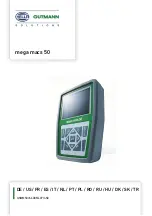
TRAK MODEL 9100 MODULAR FREQUENCY/TIME SYSTEM
TM4400013
Rev.
D
1-8
1-10 OSCILLATOR
OPTIONS
Table 1-7. Oscillator Characteristics
The 9101 modules can be configured with three oscillator options. Characteristics of each oscillator are listed
below.
Oscillator
Type
10 MHz Output
Phase Noise
Accuracy to
UTC
Holdover Phase &
Frequency Drift
Note
OCXO SC cut
Single Oven
<-105 dBc @ 10Hz offset
<-125 dBc @ 100 Hz offset
<-140 dBc @ 1 KHz offset
<-145 dBc @ 10 KHz offset
<100 nsec
<10 µsec/day
<5X10
-10
/day
Holdover @
constant temp
± 5ºC
OCXO SC cut
Double Oven
<-115 dBc @ 10 Hz offset
<-135 dBc @ 100 Hz offset
<-145 dBc @ 1 KHz offset
<-150 dBc @ 10 KHz offset
<100 nsec
<10 µsec/day
<5X10
-10
/day
Holdover @
operating temp
of –30ºC to
+60ºC
Rubidium
<-100 dBc @ 10 Hz offset
<-125 dBc @ 100 Hz offset
<-140 dBc @ 1 KHz offset
<-145 dBc @ 10 KHz offset
<100 nsec
<10 µsec/week
<1X10
-11
/day
Holdover @
operating temp
of –30ºC to
+60ºC
Notes: Holdover specification is based on oscillator disciplined to GPS for a minimum of 72 hours.
1-11
MINOR & MAJOR ALARMS
Two sets of relay contacts provide Minor and Major Alarm indications. A closed contact indicates normal
operation; an open contact indicates alarm condition. A Minor Alarm is reported if the system fault is detected,
but is still supplying reliable reference frequencies. A Major Alarm is reported if the system is no longer
supplying reliable reference signals or if a power supply failure occurs. The following conditions report Minor and
Major Alarms.
Table 1-8 provides details of all the fault conditions and when the when a Minor and Major Alarm is reported
including when the system will switch from GPS REF A to GPS REF B.
















































